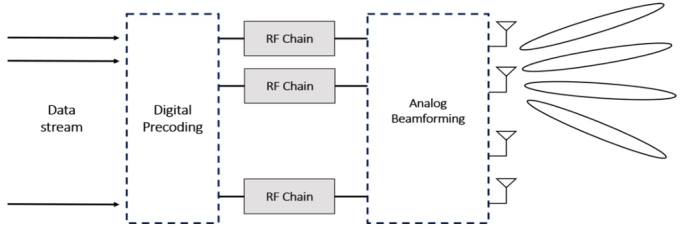|
The OP
Published on 2021-2-23 09:26
Only look at the author
This post is from RF/Wirelessly
| ||||||||||
|
Personal signature
玩板看这里: http://en.eeworld.com/bbs/elecplay.html EEWorld测评频道众多好板等你来玩,还可以来频道许愿树许愿说说你想要玩的板子,我们都在努力为大家实现! |
||||||||||
- 【Posts】Let’s make a prediction: 5G construction will accelerate at the end of the year, so will there be a wave of demand?
- 【Posts】A brief discussion on the construction planning of 5G mobile communication base stations
- 【Posts】How to install a 5G base station? How fast is the construction of 5G base stations now?
- 【Posts】5G small base station construction technology article sharing
- 【Posts】Have you used 5G? 6G is coming
- 【Posts】Will 5G really bring about big changes?
- 【Posts】Why can't the WiFi of every household in the densely packed urban communities be shared like 5G base stations?
- 【Posts】5G is coming, I can only wait and see about mobile phones and packages
- 【Download】Guangdong Tower 5G Network Construction Experience Sharing
- 【Download】5G test network and scale construction experience sharing-Hubei
- 【Download】ADI Technical Articles - 5G Communications and Its Future
- 【Download】Techniques for measuring 5G New Radio components
- 【Download】ARM White Paper: The Road to 5G: Key Features and Technologies Required for Next-Generation Cellular Communications
- 【Download】NI 5G Semiconductor Test Engineer\'s Guide
- 【Download】The Way of Communication - From Calculus to 5G
- 【Download】《5G RF FOR DUMMIES》
- 【Design】Open source DIY: WiFi, 4G, 5G remote control drones/unmanned ships, image transmission/data transmission/remote control integration!
- 【Circuits】The German government confirms that Huawei will not be excluded from 5G network construction
- 【Circuits】How to protect 5G macro base station amplifiers and antennas from electrical hazards
- 【Circuits】5G RF front-end module, do you understand it?
- 【Circuits】Type ADXL05 monolithic acceleration sensor circuit with signal conditioning ±1g to ±5g
- 【Circuits】Recommendations for 5G small base station power supply design
- 【Circuits】RF FUSION? 5G Chipset
- 【Articles】The United States has developed the first integrated single-chip digital millimeter wave beamformer to enable high-frequency 5G communications
- 【Articles】Lianchuang Electronics and others invested 2 billion yuan in construction, and Huangshi Lianxin 5G touch display project went into production
- 【Articles】Intel joins hands with Lenovo to build 5G factory of the future and build a new paradigm of smart manufacturing
- 【Articles】Huawei will never give up its mobile phone business Xu Zhijun: There will be new 5G mobile phones in the future
- 【Articles】Huawei will not give up its mobile phone business. Xu Zhijun: There will be new 5G mobile phones in the future
- 【Articles】5G opens a new future for security robots
-
Broadband millimeter-wave digital-analog hybrid beamforming
Abstract:Aimingatthefrequencyselectivechannelfadingandhardwareimplementationconstraintsfacedbybroadbandmulti-antennamillimeterwavesystems,adigital-analoghybridbeamformingalgorithmcombinedwithsingle-carrierfrequencydomainequalizationtechnolo ...
-
The nonlinearity of the diode will cause some new waveforms to be generated. What is the underlying formation principle? Who can explain it to me?
ThenonlinearityofthediodewillcausesomenewwaveformstobegeneratedWhocanexplainittome?
-
Wireless Charging Foreign Object Detection FOD
WirelessChargingForeignObjectDetectionFOD
- Download data page shows dx
- How to convert the copper foil of the package substrate into a pad, or directly add a pin number
- Three closed loop servo motor motion control
- Countdown to Day 2!!! TI Live Broadcast | Creating an Electrified Future with Sitara AM263x MCUs
- Two-input AND gate engineering files and test files
- China's chip manufacturing: After ten years of drinking ice, the passion is hard to cool down
- [Shanghai Hangxin ACM32F070 development board + touch function evaluation board] 03. Different LCD display implementation methods
EEWorld Datasheet Technical Support
-
Huawei's Strategic Department Director Gai Gang: The cumulative installed base of open source Euler operating system exceeds 10 million sets
On November 15, it was reported that the first AI native open source operating system of openEule
-
Whether it is the electrification of automobiles or generative artificial intelligence, power tec
-
Wi-Fi 8 specification is on the way: 2.4/5/6GHz triple-band operation
MediaTek has released a white paper on its official website, outlining some details of the next-g
- Vietnam's chip packaging and testing business is growing, and supply-side fragmentation is splitting the market
- Apple faces class action lawsuit from 40 million UK iCloud users, faces $27.6 billion in claims
- The US asked TSMC to restrict the export of high-end chips, and the Ministry of Commerce responded
- ASML predicts that its revenue in 2030 will exceed 457 billion yuan! Gross profit margin 56-60%
- Qualcomm launches its first RISC-V architecture programmable connectivity module QCC74xM, supporting Wi-Fi 6 and other protocols
- It is reported that memory manufacturers are considering using flux-free bonding for HBM4 to further reduce the gap between layers
- ON Semiconductor CEO Appears at Munich Electronica Show and Launches Treo Platform
- Problems with STM32 and passive buzzer playing sound
- Embedded Tutorial_DSP Technology_DSP Experiment Box Operation Tutorial: 2-28 Building a Lightweight WEB Server Experiment
- OPA847IDBVR op amp domestic replacement
- AG32VF407 Test UART
- [Digi-Key Follow Me Issue 2] Chapter 1: Sharing on receiving the goods
- What model is this infrared receiver? Which model can be used instead? Thank you
- Selling brand new unopened ZYNQ 7Z020 FPGA core board
- The LORA module used in the lithium battery-powered water meter setting can save energy when 100 water meters are installed in one corridor.
- I would like to ask, when a port is set to RX0, is it necessary to set the input and output direction of this port?
- Why is this year so difficult? It’s even more difficult than during the pandemic. I’m 30 and facing unemployment. I’m so confused.
- Ask about the voltage regulator test question
- [Xiaohua HC32F448 Review] About Xiaohua Semiconductor's UART interrupt sending and PRINTF construction and redirection
- 【BIGTREETECH PI development board】 HDMI output test
- 【BIGTREETECH PI development board】+08. Audio test (zmj)
- [Xiaohua HC32F448 Review] +RTC electronic clock
- Canaan K230AI Development Board Review 8--Face 3D Network, Human Key Points, License Plate Recognition, Character Recognition, Object Recognition
- Embedded Engineer AI Challenge Camp (Advanced): Deploy InsightFace algorithm on RV1106 for real-time face recognition of multiple people
- # STM32H7S78-DK Development Kit Three-week Review: Implementation and Analysis of Simple Sound Collection and Storage Using SD Card Reading and Writing
- [STM32H7R/S] Review⑧ nano edge ai studio training a model--Part 1
- [2024 DigiKey Creative Competition] A "fortune-telling" artifact based on Raspberry Pi
- New energy vehicle on-board AC slow charging and maintenance
- Embedded Engineer AI Challenge Camp (Advanced): Deploy InsightFace algorithm on RV1106 for real-time face recognition of multiple people
- I want to make a self-driving car. I saw one on Bilibili that costs 300 yuan. I am hesitant.
- [K230 Embedded AI Development Board Review] + License Plate Recognition and Billing Management
- How to deploy LVGL free graphics library on low-cost ARM platform, based on Allwinner T113-i










 提升卡
提升卡 变色卡
变色卡 千斤顶
千斤顶